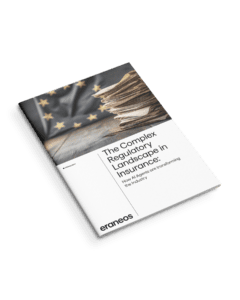We are excited to announce our participation in the AI and Data Summit in Munich, in collaboration with our esteemed client, Volker Rothenbacher from Boehringer Ingelheim. At Eraneos, we are proud to support Boehringer Ingelheim in various areas, contributing to the success of their One Medicine Analytics program. In this interview, Volker Rothenbacher shares insights into his role, the progress of the One Medicine Analytics program, and the key learnings from this transformative journey.
What is your current role at Boehringer Ingelheim, and what are your priorities regarding the One Medicine Analytics program?
I am the Product Manager of One Medicine Analytics (OMA). Our current focus is on delivering reliable operational insights for our Medicine departments and ultimately to bring our medicines to patients faster. Everything we do revolves around our clinical trials and how we can become better and more efficient with the data we generate. The OMA team is a dedicated and agile group of professionals committed to continuous improvement. With a shared pursuit of better analytics and deeper insights, around 80 experts from various business and IT domains collaborate regularly, rowing in the same direction to propel the OMA initiative forward.
The One Medicine Analytics program started officially in 2023. What is the current status?
One Medicine Analytics is a large digital transformation initiative that will essentially never end, as continuous improvement is the nature of business intelligence. We aim for this ecosystem to generate value from the point of data generation to the advanced analytics we perform, enabling us to make better and faster decisions based on our data.
What were the first signs/results that confirmed you had done the right thing?
One highlight was our very first release in July 2024 for our colleagues in the Quality Medicine department after one year of significant foundational work. We were able to show, thanks to OMA, that our users can access and load key metrics 7-10 times faster than before. This initial success demonstrated the effectiveness of our efforts. In May this year, we will release the 8th version of OMA including metrics for our other departments like Regulatory Affairs and Clinical Development & Operations, with more updates planned until the end of the year. This is just the beginning of our transformation journey. More positive outcomes, such as the ability to move towards predictive data analysis, will come soon.
“Eraneos is responsible for the Scrum Team, Change Management and Communication activities, User Adoption and Enablement, Demand Coordination, Data Architecture, and Product Management Support — a wide range of services crucial for our success.”
What was your priority when selecting your partners for this program?
We knew what we wanted to achieve with our vision but lacked the in-house skills and experience in some key areas to manage something as significant as One Medicine Analytics on our own. Currently, we have seven vendors supporting us in various areas. Eraneos is responsible for the Scrum Team, Change Management and Communication activities, User Adaption and Enablement, Demand Coordination, Data Architecture and Product Management Support — a wide range of services crucial for our success.
What have been your three key learnings from this program?
People
The success of the One Medicine Analytics program heavily relies on the people involved. This includes not only the internal team members but also the external partners and vendors. Key learnings in this area include:
- Collaboration and Communication: Effective collaboration and clear communication among all stakeholders are crucial. Regular meetings, updates, and feedback loops help ensure everyone is aligned and working towards the same goals. The bigger your team gets, the more structure you need.
- Change Management: Managing change effectively is vital. This involves preparing, supporting, and helping individuals to adapt to new processes, technologies, and ways of working – both for the team and for our end users.
- Culture: In OMA, there is no divide between IT and Business – as it should be – and we want to be transparent and learn from our mistakes. This is the most important point for everything we do.
Tools and Technology
The right tools and technology are the backbone of any successful analytics program. Our key learnings in this area include:
- Scalability and Flexibility: Choosing tools and technologies that can scale with the growth of the program and adapt to changing needs is crucial. This ensures that the system remains robust and efficient as the volume of data and complexity of analyses increase.
- Integration: Seamless integration of various tools and systems is necessary to create a cohesive ecosystem. This allows for smooth data flow and interoperability between different components of the analytics infrastructure. In our case, OMA utilizes data from old legacy programs to generate new dashboards and reports, ensuring that valuable historical data is leveraged effectively.
- Innovation: Staying abreast of the latest technological advancements and being open to adopting innovative solutions can provide a competitive edge. This includes exploring new data sources, advanced analytics techniques, and emerging technologies like AI and machine learning. Additionally, we are prepared to generate new dashboards based on user demand, ensuring that our analytics capabilities continue to evolve and meet the needs of our users.
Processes and Organization
Well-defined processes and a strong organizational structure are critical for the smooth operation and success of the program. Key learnings in this area include:
- Process Optimization: Continuously reviewing and optimizing processes to eliminate inefficiencies and improve productivity is essential. This involves streamlining workflows, automating repetitive tasks, and implementing best practices.
- Governance and Compliance: Establishing robust governance frameworks and ensuring compliance with relevant regulations and standards is crucial. This helps in maintaining data integrity, security, and privacy. This is one of the most underestimated factors for speed and quality.
- Cross-functional Collaboration: Encouraging collaboration across different departments and functions within the organization fosters a holistic approach to problem-solving and decision-making. This ensures that insights generated from data analytics are actionable and aligned with the overall business strategy.

Matthias Wittig
Senior Manager
Life Sciences





